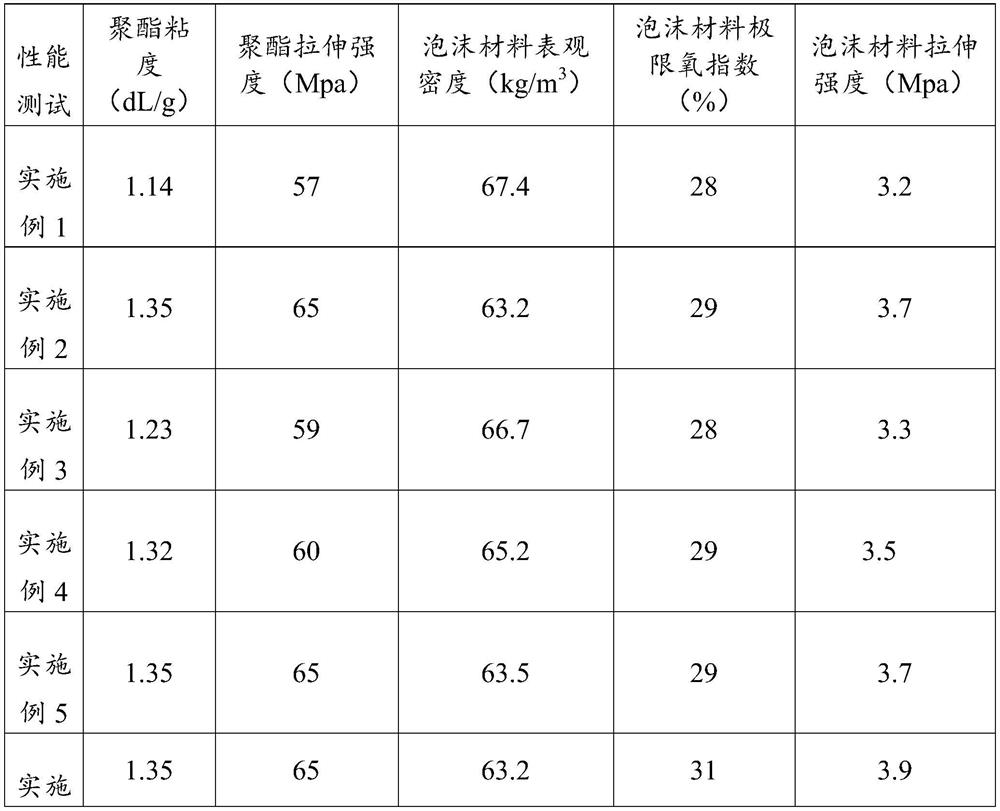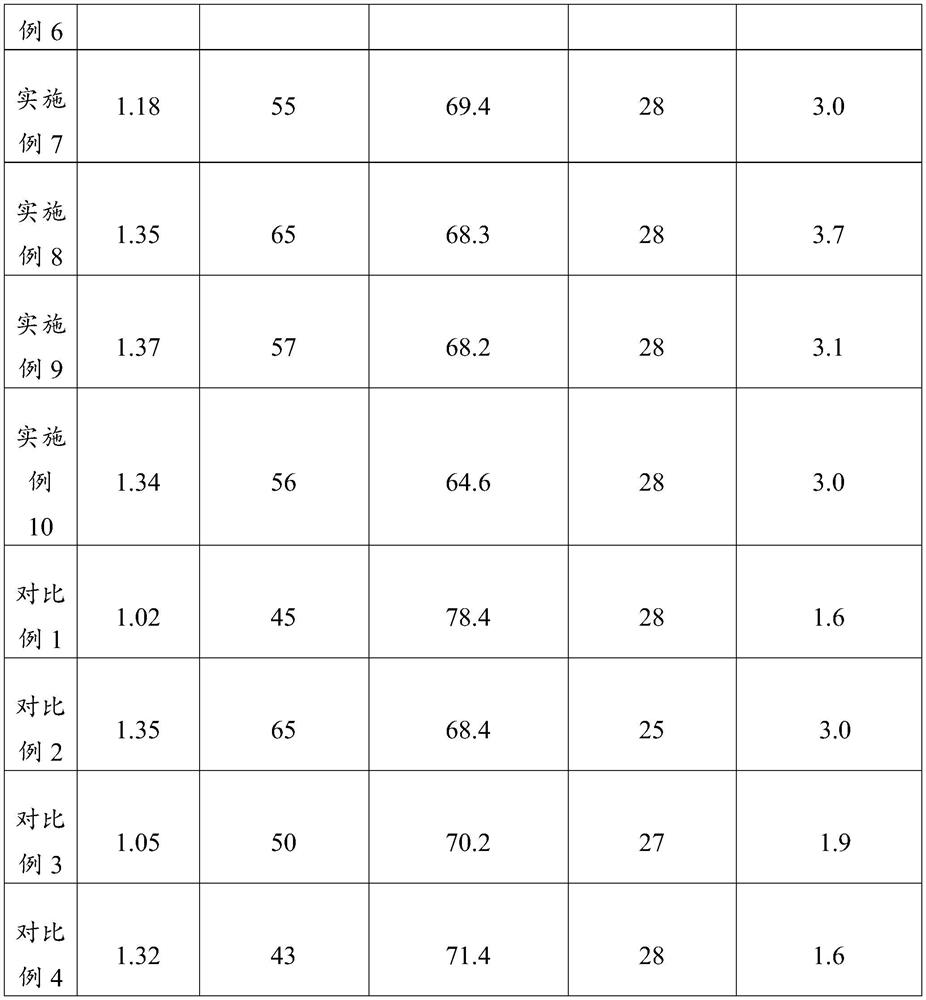Regenerated PET polyester, regenerated flame-retardant PET foam material and preparation method of regenerated flame-retardant PET foam material
A foaming material and polyester technology, which is applied in the field of engineering plastics to achieve the effects of improving flame retardancy, inhibiting thermal degradation and enhancing thermal stability.
- Summary
- Abstract
- Description
- Claims
- Application Information
AI Technical Summary
Problems solved by technology
Method used
Image
Examples
Embodiment 1-10 and comparative example 1-4
[0033] The components and parts by weight of the embodiment of the present invention and the comparative example are selected as follows, taking the preparation of 10000g of recycled PET polyester as an example:
[0034] m 2 =166.1*(10000-m 1 ) / 192
[0035] m 3 =[62*(1000-m 1 ) / 192]*1.4
[0036] Taking the preparation of 10 kg of recycled PET polyester and adding 3500 g of recycled PET polyester as an example, the alkyd ratio is 1.4
[0037] m 2 =166.1*(10000-3500) / 192=5623.2g
[0038] m 3 =[62*(10000-3500) / 192]*1.4=2938.5g
[0039] Note: m 1 For recycled PET polyester quality; m 2 is the mass of terephthalic acid; m 3 is the mass of ethylene glycol; 166.1 is the unit molar mass of terephthalic acid; 62 is the unit molar mass of ethylene glycol; 192 is the molar mass of the PET monomer; k is the alkyd molar ratio (that is, ethylene glycol and terephthalic acid) Formic acid molar ratio)
Embodiment 1
[0041] (a) Selection of components and parts by weight
[0042] Recycled PET polyester: recycled PET polyester 3500g, terephthalic acid 5623.2g, ethylene glycol 2938.5g, catalyst 3.8g, stabilizer 3.6g, nucleating agent 210g, antioxidant 1.5g, branching agent is triphenyl Methane triisocyanate 2g and pyromellitic dianhydride 6g; wherein, the catalyst is ethylene glycol antimony, the stabilizer is trimethyl phosphite, the nucleating agent is titanium dioxide, and the antioxidant is antioxidant 1076;
[0043] Recycled flame retardant PET foam material: recycled PET polyester 9000g, flame retardants are triphenyl phosphate 500g and hexaphenoxy cyclotriphosphazene 600g;
[0044] (b) The preparation method of the regenerated flame retardant PET foam material is as follows: (1) The recycled PET polyester is added to the reaction kettle, terephthalic acid, ethylene glycol, catalyst, stabilizer, nucleating agent, antioxidant, support After mixing the agent evenly, it is prepared into ...
Embodiment 2
[0046] The only difference between Example 2 and Example 1 is that the proportioning selection of the branching agent is different. In Example 2, the branching agent is triphenylmethane triisocyanate 4g and pyromellitic dianhydride 4g, and the remaining components, The parts by weight and preparation method are exactly the same as in Example 1;
PUM
 Login to View More
Login to View More Abstract
Description
Claims
Application Information
 Login to View More
Login to View More - R&D Engineer
- R&D Manager
- IP Professional
- Industry Leading Data Capabilities
- Powerful AI technology
- Patent DNA Extraction
Browse by: Latest US Patents, China's latest patents, Technical Efficacy Thesaurus, Application Domain, Technology Topic, Popular Technical Reports.
© 2024 PatSnap. All rights reserved.Legal|Privacy policy|Modern Slavery Act Transparency Statement|Sitemap|About US| Contact US: help@patsnap.com










